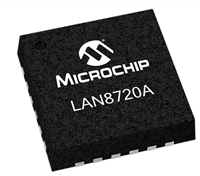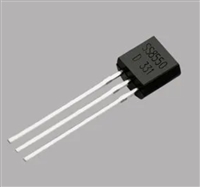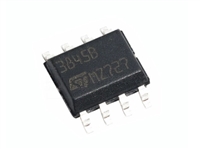PRELIMINARYTECHNICALDATA
Preliminary Technical Data
AD7273/AD7274
TERMINOLOGY
Integral Nonlinearity (INL)
Total Harmonic Distortion (THD)
This is the maximum deviation from a straight line pass-
ing through the endpoints of the ADC transfer function.
For the AD7273/AD7274, the endpoints of the transfer
function are zero scale, a 1/2 LSB below the first code
transition, and full scale, a point 1/2 LSB above the last
code transition.
Total harmonic distortion is the ratio of the rms sum of
harmonics to the fundamental. It is defined as:
2
2
2
V2 +V32 +V 4 +V52 +V 6
THD (dB ) = 20 log
V1
Differential Nonlinearity (DNL)
This is the difference between the measured and the
ideal 1 LSB change between any two adjacent codes in
the ADC.
where V1 is the rms amplitude of the fundamental and V2,
V3, V4, V5 and V6 are the rms amplitudes of the second
through the sixth harmonics.
Peak Harmonic or Spurious Noise (SFDR)
Offset Error
Peak harmonic or spurious noise is defined as the ratio of
the rms value of the next largest component in the ADC
output spectrum (up to fS/2 and excluding dc) to the rms
value of the fundamental. Normally, the value of this
specification is determined by the largest harmonic in the
spectrum, but for ADCs where the harmonics are buried
in the noise floor, it will be a noise peak.
This is the deviation of the first code transition (00 . . .
000) to (00 . . . 001) from the ideal, i.e, AGND + 0.5 LSB
.
Gain Error
This is the deviation of the last code transition (111 . . .
110) to (111 . . . 111) from the ideal, i.e, VREF
–
1.5LSB after the offset error has been adjusted out.
Total Unadjusted Error (TUE)
This is a comprehensive specification which includes gain,
linearity and offset errors.
Intermodulation Distortion (IMD)
With inputs consisting of sine waves at two frequencies, fa
and fb, any active device with nonlinearities will create
distortion products at sum and difference frequencies of
Track/Hold Acquisition Time
The Track/Hold acquisition time is the time required
for the output of the track/hold amplifier to reach its
final value, within 0.5 LSB, after the end of
conversion. See Serial Interface section for more details.
mfa
nfb where m, n ꢀ ꢁ, 1, 2, 3, etc. Intermodulation
distortion terms are those for which neither m nor n are
equal to zero. For example, the second order terms in-
clude (fa + fb) and (fa – fb), while the third order terms
include (2fa + fb), (2fa – fb), (fa + 2fb) and (fa – 2fb).
Signal to Noise Ratio (SNR)
This is the measured ratio of signal to noise at the
output to the A/D converter. The signal is the rms value
of the sine wave input. Noise is the rms quantization
error within the Nyquist bandwitdh (fs/2). The rms
value of a sine wave is one half its peak to peak value
divided by √2 and the rms value for the quantization
noise is q/√12. The ratio is dependant on the number of
quantization levels in the digitization process; the more
levels, the smaller the quantization noise. For an ideal
N-bit converter, the SNR is defined as:
The AD7273/AD7274 are tested using the CCIF standard
where two input frequencies are used (see fa and fb in the
specification page). In this case, the second order terms
are usually distanced in frequency from the original sine
waves while the third order terms are usually at a fre-
quency close to the input frequencies. As a result, the
second and third order terms are specified separately. The
calculation of the intermodulation distortion is as per the
THD specification where it is the ratio of the rms sum of
the individual distortion products to the rms amplitude of
the sum of the fundamentals expressed in dBs.
SNR = 6.02 N + 1.76 dB
Power Supply Rejection Ratio (PSRR)
Thus for a 12-bit converter this is 74 dB, for a 10-bit
converter it is 62 dB.
Practically, though, various error sources in the ADC
cause the measured SNR to be less than the theoretical
value. These errors occur due to integral and differential
nonlinearities, internal AC noise sources, etc.
The power supply rejection ratio is defined as the ratio of the
power in the ADC output at full-scale frequency, f, to the
power of a 2ꢁꢁ mV p-p sine wave applied to the ADC VDD
supply of frequency fs.
PSRR (dB) ꢀ 1ꢁ log (Pf/ Pfs)
Signal-to- (Noise + Distortion) Ratio (SINAD)
This is the measured ratio of signal to (noise +
distortion) at the output of the A/D converter. The
signal is the rms value of the sine wave and noise is the
rms sum of all nonfundamentals signals up to half the
sampling frequency (fs/2), including harmonics but
excluding dc.
Pf is the power at frequency f in the ADC output; Pfs is
the power at frequency fs coupled onto the ADC VDD
supply.
Aperture Delay
This is the measured interval between the leading edge of the
sampling clock and the point at which the ADC actually takes
the sample.
Aperture Jitter
This is the sample-to-sample variation in the effective point
in time at which the sample is taken.
REV. PrB
–10–






 AT24C256芯片手册参数分析、引脚说明、读写程序示例
AT24C256芯片手册参数分析、引脚说明、读写程序示例

 LAN8720A的替代型号推荐、资料手册数据分析、特点介绍
LAN8720A的替代型号推荐、资料手册数据分析、特点介绍

 SS8550数据手册:应用场景、主要参数分析、特性分析
SS8550数据手册:应用场景、主要参数分析、特性分析

 UC3845全面解析:资料手册参数、引脚详解、维修技巧与替代型号推荐
UC3845全面解析:资料手册参数、引脚详解、维修技巧与替代型号推荐
